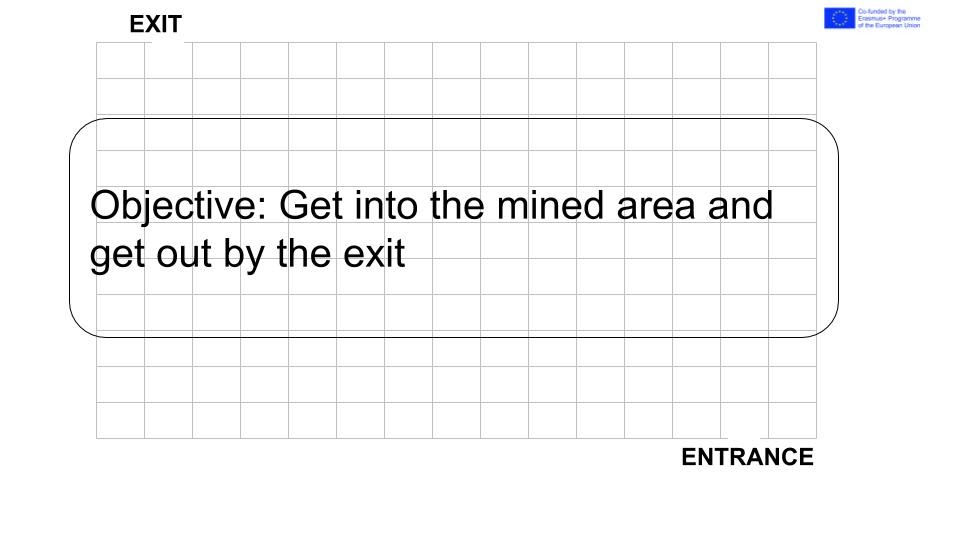-
Introduction
In this section you will learn about the strategy we have followed to teach our students programming in a simple and fun way. Learning to code can be a motivating activity.
-
The DEMETER I language
In this section you will learn about the basic structures of our programming language. We call this set of instructions DEMETER I.
-
The DEMETER II language
In this section you will learn about the evolution of the initial DEMETER I instruction set. We will call the full language DEMETER II. In addition to having new instructions, the minefields have new elements that increase the difficulty.
Basis of the problem
The game
The game consists of a bounded area called minefield which can have both mines and obstacles. This area is represented by a grid. The purpose of the rover (DEMETER) will be to enter into the grid to clear the field of mines avoiding obstacles and get out through the delimited exit. The student will have the solution visible in order to create a program in DEMETER pseudo-language that makes the rover fulfill its mission efficiently.

Pseudolenguaje
We have invented an easy pseudo-language to be able to move a virtual rover which can deactivate the mines contained in a minefield and avoid possible obstacles (trees, stones, etc.).
With our method, the teacher will be responsible for giving students the problem to be addressed and together through correctly targeted brainstorming techniques they will have to generate a program to resolve each challenge.
We have divided the pseudolanguage in two parts:
- DEMETER I. First version of the pseudo-language with the basic orders of any programming language.
- DEMETER II. This pseudo-language includes more complex orders and the minefields are more complicated.
